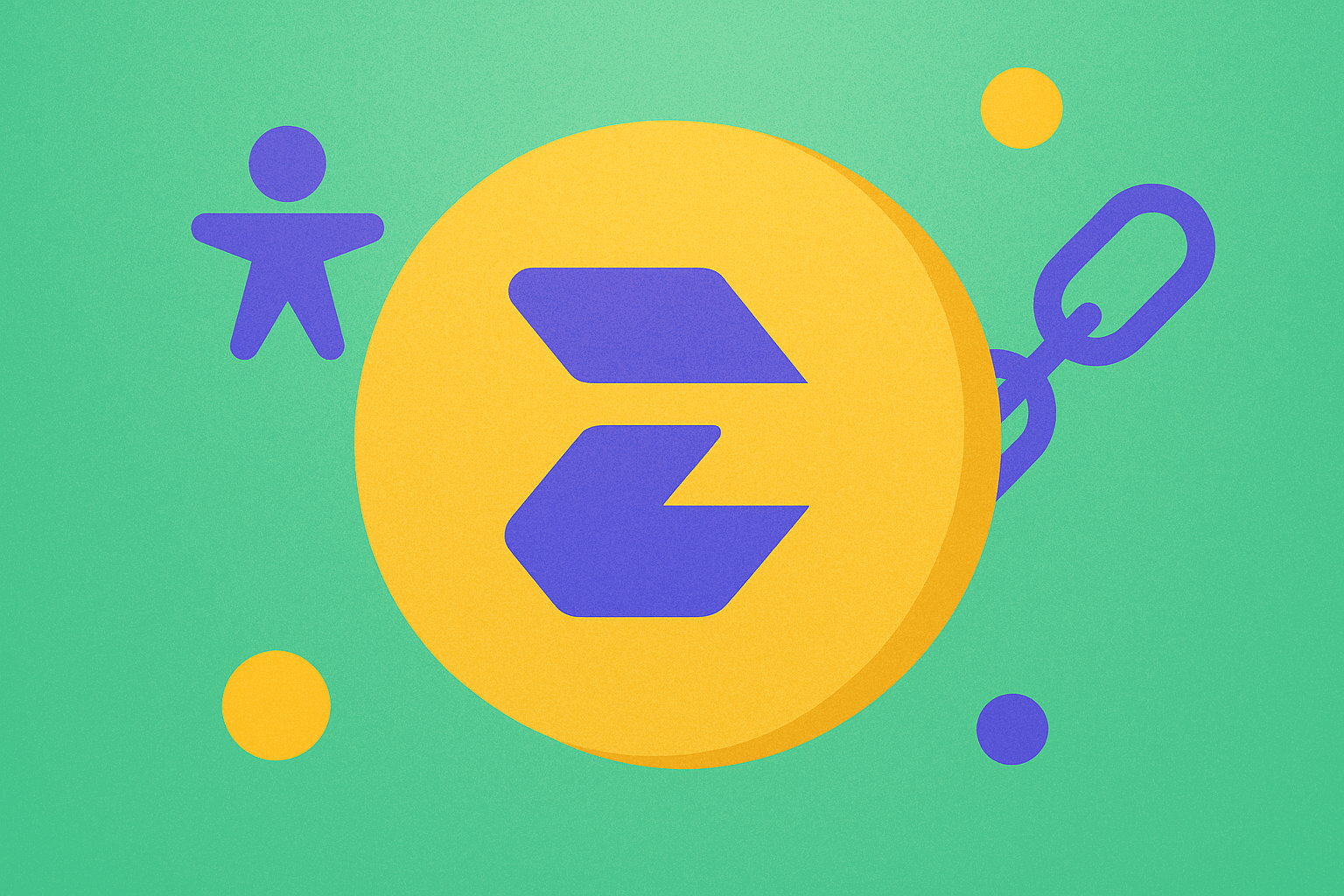CLND nedir: Bilişsel Yük Ağ Tasarımı Kavramı ve Uygulamalarının Anlaşılması

Colend'in Konumlandırılması ve Önemi
2023 yılında Colend (CLND), en hızlı büyüyen Bitcoin yan zinciri Core Chain üzerinde merkeziyetsiz kredi protokolü olarak faaliyete geçti. Bu protokol, Bitcoin'i üretken bir varlık haline getirme sorununa çözüm sunmayı amaçlamaktadır.
BTCFi ekosisteminin önde gelen DeFi protokollerinden biri olan Colend, ödünç verme ve stake işlemlerinde önemli bir rol oynayarak Bitcoin'in uzun vadeli güvenliğini destekler ve sahiplerine getiri elde etme imkânı tanır.
2025 itibarıyla Colend, toplam kripto piyasa değerinin %1'inden azını oluşturan BTCFi pazarında kilit bir oyuncu olmuştur; bu da büyük bir büyüme potansiyeline işaret etmektedir. Bu makalede teknik mimarisi, piyasa performansı ve gelecekteki potansiyeli ele alınacaktır.
Kökeni ve Gelişim Süreci
Kuruluş Arka Planı
Colend, 2023 yılında Bitcoin'i üretken bir varlığa dönüştürme sorununu çözmek üzere geliştirildi. Bitcoin yan zincirlerinin ve DeFi yeniliklerinin yükselişi sırasında ortaya çıkan Colend, Bitcoin sahiplerinin ödünç verme ve stake yoluyla getiri elde etmesini sağlarken Bitcoin'in güvenliğini desteklemeyi hedefledi.
Colend'in piyasaya sürülmesi, Bitcoin sahipleri ve DeFi kullanıcıları için BTC varlıklarının faydasını en üst seviyeye çıkarmak adına yeni olanaklar sundu.
Önemli Kilometre Taşları
- 2023: Core Chain üzerinde ana ağın başlatılması ve merkeziyetsiz kredi işlevinin uygulanması.
- 2023: Kullanıcılara ödül dağıtımı üzerinde önemli etki sağlayan benzersiz ve(3,3) yönetişim modelinin tanıtılması.
- 2024: 30 Kasım'da fiyat, tüm zamanların en yüksek seviyesi olan $0,33999'a ulaştı.
- 2025: Core Chain üzerinde BTCFi ekosisteminin sürekli büyümesi ve gelişimi.
Core Chain topluluğu ve Colend geliştirme ekibinin desteğiyle protokol, BTCFi alanında teknolojisini, güvenliğini ve gerçek dünyadaki uygulamalarını sürekli olarak iyileştirmektedir.
Colend Nasıl Çalışır?
Merkeziyetsiz Yönetim
Colend, Core Chain üzerinde, geleneksel finansal kurumlar ya da kamu otoritelerinden bağımsız şekilde merkeziyetsiz bir node ağı üzerinde çalışır. Bu node'lar işlemleri doğrulamak için birlikte hareket eder, sistemin şeffaflığını ve saldırılara karşı dayanıklılığını artırır; böylece kullanıcılar daha fazla yetki kazanır ve ağın sağlamlığı güçlenir.
Blokzincir Temeli
Colend'in temel blokzinciri, her işlemin kaydedildiği halka açık ve değiştirilemez bir dijital defterdir. İşlemler bloklar halinde bir araya getirilir ve kriptografik hash'lerle birbirine bağlanarak güvenli bir zincir oluşturulur. Herkes bu kayıtları görüntüleyebilir; böylece aracıya gerek olmadan güven oluşur. Core Chain üzerinde çalışan Colend, Bitcoin yan zincirinin hızlı ve verimli altyapısından faydalanır.
Adaletin Sağlanması
Colend, işlemleri doğrulamak ve çift harcama gibi sahtecilikleri önlemek için Core Chain'in konsensüs mekanizmasını benimser. Katılımcılar, Core Chain'in konsensüs modeline özgü faaliyetlerle ağ güvenliğini korur ve CLND tokenleriyle ödüllendirilir. Yenilikçi yönü, Bitcoin'in güvenliğini kullanırken DeFi işlevselliği sunmasında yatmaktadır.
Güvenli İşlemler
Colend, işlemleri güvence altına almak için açık-özel anahtar şifrelemesi kullanır:
- Özel anahtarlar (gizli şifre benzeri) işlemleri imzalamak için kullanılır
- Açık anahtarlar (hesap numarası gibi) sahipliği doğrulamak için kullanılır
Bu yapı, fon güvenliğini sağlarken işlem gizliliğini korur. Ayrıca, Colend'in akıllı sözleşmeleri, kredi ve borç işlemlerinin güvenliğini artırmak için detaylı denetimlerden geçirilir.
CLND'nin Piyasa Performansı
Dolaşım Durumu
1 Kasım 2025 itibarıyla CLND'nin dolaşımdaki arzı 3.676.300 token, toplam arzı ise 100.000.000 token'dır.
Fiyat Dalgalanmaları
CLND, 30 Kasım 2024 tarihinde $0,33999 ile tüm zamanların en yüksek fiyatına ulaştı.
En düşük fiyatı ise $0,01983 olup 18 Aralık 2024 tarihinde gerçekleşti.
Bu dalgalanmalar, piyasa duyarlılığını, benimseme eğilimlerini ve dışsal faktörleri yansıtmaktadır.
Mevcut CLND piyasa fiyatını görmek için tıklayın

Zincir Üzeri Metrikler
- Günlük İşlem Hacmi: $9.860,11 (ağdaki aktiviteyi gösterir)
- Aktif Adresler: 4.799 (kullanıcı katılımını gösterir)
CLND Ekosisteminde Uygulamalar ve Ortaklıklar
Temel Kullanım Alanları
CLND ekosistemi çeşitli uygulamaları destekler:
- DeFi: Core Chain üzerinde merkeziyetsiz kredi sunan Colend.
- BTCFi: Bitcoin sahiplerine ödünç ve stake yoluyla getiri elde etme imkânı sunar.
Stratejik İşbirlikleri
CLND, Core Chain ile yaptığı ortaklık sayesinde teknik kapasitesini ve piyasa etkisini artırmıştır. Bu işbirliği, CLND ekosisteminin büyümesi için güçlü bir temel sağlamaktadır.
Tartışmalar ve Zorluklar
CLND'nin karşılaştığı başlıca zorluklar şunlardır:
- Piyasa Rekabeti: Hızla gelişen BTCFi alanında diğer DeFi protokolleriyle rekabet etmek.
- Düzenleyici Belirsizlik: Merkeziyetsiz finans alanında olası düzenleyici engeller.
- Piyasa Oynaklığı: Kripto para piyasasında sıkça görülen fiyat dalgalanmalarına maruz kalmak.
Bu hususlar, topluluk ve piyasa içinde tartışmalara neden olmuş; CLND'nin yenilikçi geliştirme sürecini tetiklemiştir.
CLND Topluluğu ve Sosyal Medya Ortamı
Topluluk Coşkusu
CLND topluluğu oldukça dinamiktir; 1 Kasım 2025 itibarıyla 4.799 sahip bulunuyor.
X platformunda ilgili paylaşımlar ve hashtag'ler (ör. #CLND) sıkça trend oluyor.
Fiyat hareketleri ve yeni özellik duyuruları topluluğun ilgisini artırıyor.
Sosyal Medya Duyarlılığı
X'teki duyarlılık karma bir tablo çiziyor:
- Destekçiler, CLND'nin benzersiz ve(3,3) yönetişim modelini ve BTCFi piyasasındaki konumunu övüyor.
- Eleştirmenler ise fiyat oynaklığı ve piyasa değeri dalgalanmalarına dikkat çekiyor.
Son trendler piyasa oynaklığına rağmen temkinli bir iyimserlik gösteriyor.
Gündemdeki Konular
X kullanıcıları, CLND'nin BTCFi sektöründe büyüme potansiyelini aktif şekilde tartışıyor; hem dönüştürücü etkisini hem de ana akımda benimsenme güçlüklerini vurguluyorlar.
CLND Hakkında Daha Fazla Bilgi Kaynağı
- Resmi Web Sitesi: Özellikler, kullanım alanları ve en güncel gelişmeler için CLND'nin resmi web sitesini ziyaret edin.
- Whitepaper: CLND'nin whitepaper'ı teknik mimariyi, hedefleri ve vizyonu detaylandırır.
- X Güncellemeleri: X platformunda CLND @colend_xyz hesabı ile 1 Kasım 2025 tarihi itibarıyla paylaşımlar teknik güncellemeler, topluluk etkinlikleri ve ortaklık haberlerini kapsar.
CLND Gelecek Yol Haritası
- Ekosistem Hedefi: BTCFi pazar payını toplam kripto piyasa değerindeki mevcut %1'in üzerine çıkarmak.
- Uzun Vadeli Vizyon: Bitcoin'i üretken bir varlığa dönüştüren lider platform olmak.
CLND'ye Nasıl Katılabilirsiniz?
- Satın Alma Kanalları: CLND'yi Gate.com üzerinden alın
- Depolama Çözümleri: Core Chain ile uyumlu güvenli cüzdanlar kullanın
- Yönetişime Katılım: ve(3,3) yönetişim modeliyle topluluk kararlarına katılın
- Ekosisteme Katkı: Colend protokolüne katkı sağlamak için geliştirici dokümantasyonunu inceleyin
Özet
CLND, Core Chain üzerinde merkeziyetsiz kredi anlayışını yeniden tanımlayarak Bitcoin sahiplerine yenilikçi yönetişim ve getiri fırsatları sunuyor. Aktif topluluğu, zengin kaynakları ve BTCFi sektöründeki konumu ile kripto para alanında öne çıkıyor. Piyasa oynaklığı ve rekabet gibi zorluklara rağmen CLND'nin yenilikçi yaklaşımı ve net yol haritası, merkeziyetsiz finansın geleceğinde güçlü bir konum elde etmesini sağlıyor. İster yeni başlayan ister deneyimli bir kullanıcı olun, CLND'yi takip etmek ve katılım sağlamak önemlidir.
Sıkça Sorulan Sorular
Lenf nodu biyopsisi ne kadar ciddi bir işlemdir?
Lenf nodu biyopsisi genellikle küçük çaplı bir işlemdir. Genellikle güvenlidir ve komplikasyonlar nadiren görülür. Sonuçlar çoğunlukla aynı gün alınır ve hızlı tanı sağlar.
Sentinel lenf nodu biyopsisi büyük bir ameliyat mıdır?
Hayır, sentinel lenf nodu biyopsisi minimal invaziv bir işlemdir ve büyük bir ameliyat değildir. Genellikle kanser yayılımını kontrol etmek için bir veya birkaç lenf nodunun çıkarılması işlemini içerir.
Lenf nodu diseksiyonunun diğer adı nedir?
Lenf nodu diseksiyonu, lenfadenektomi olarak da adlandırılır. Bu, kanser değerlendirmesi için lenf nodlarının cerrahi olarak çıkarılması işlemidir.
Lenf nodlarının alınması ne kadar ciddi bir işlemdir?
Lenf nodlarının alınması genellikle güvenlidir ve ağrı ile şişlik gibi hafif yan etkilerle birlikte olabilir. Ciddi komplikasyonlar nadirdir. İyileşme süreci genellikle sorunsuz ilerler.

Neden SUI Şu Anda Yükselişte

CORN nedir: Bu Çok Yönlü Tahılın Küresel Önemi

BIFIF nedir: Finansal Kapsayıcılığa Yönelik Atılım Girişimi Çerçevesi Hakkında Bilgi

CORN nedir: Bu Çok Yönlü Tahıl İçin Temel Rehber

EDC Cüzdan ile Kripto Alım-Satımında Sorunsuz Deneyim: EDC Coin Satın Alma ve Alım-Satım Artık Çok Daha Kolay

2025 XU3O8 Fiyat Tahmini: Nükleer Enerji Çağında Uranyum Piyasası Öngörüleri ve Yatırım Olanakları

Popcat (ERC) Token’ını Güvenli Bir Şekilde Satın Alma İçin Kapsamlı Rehber







